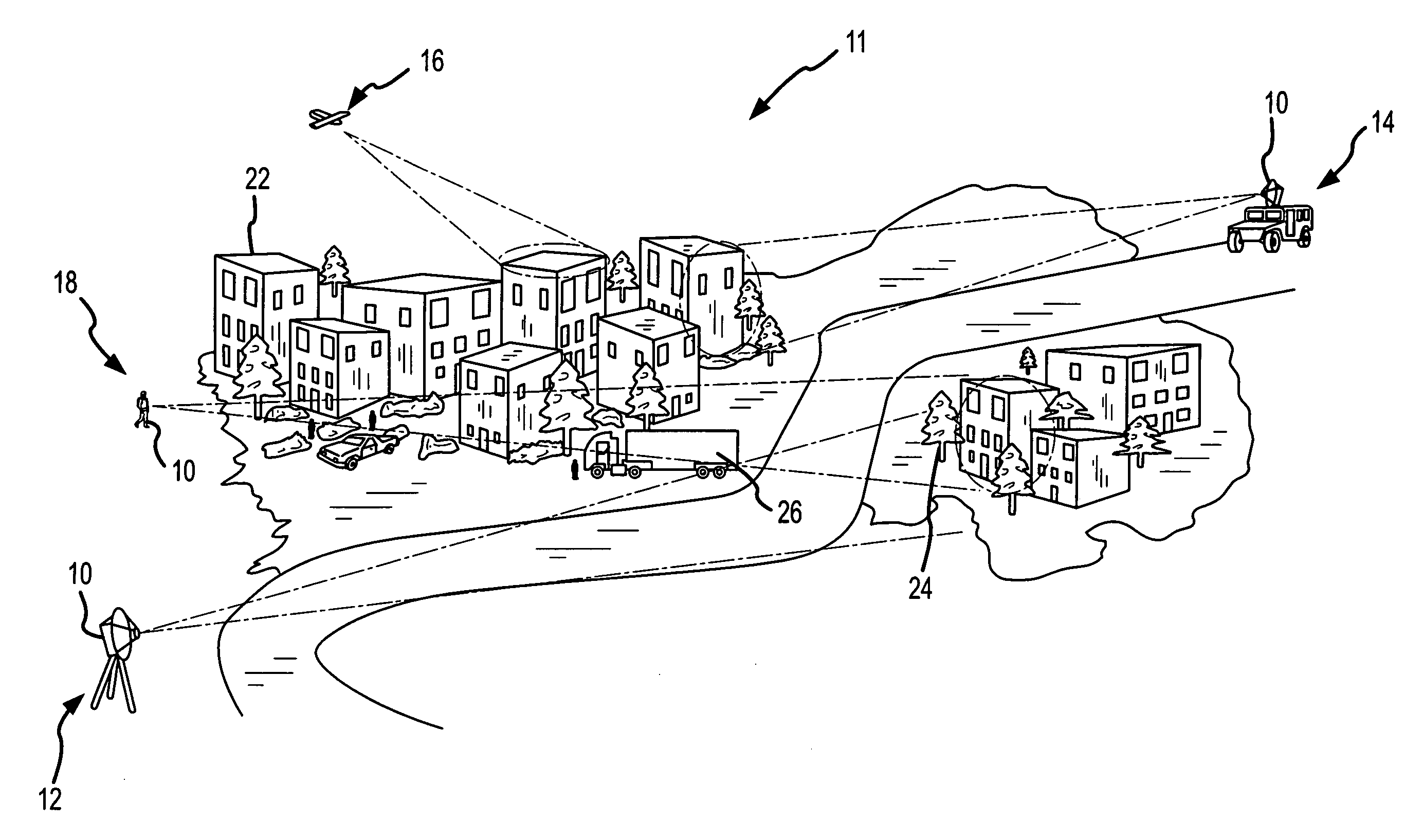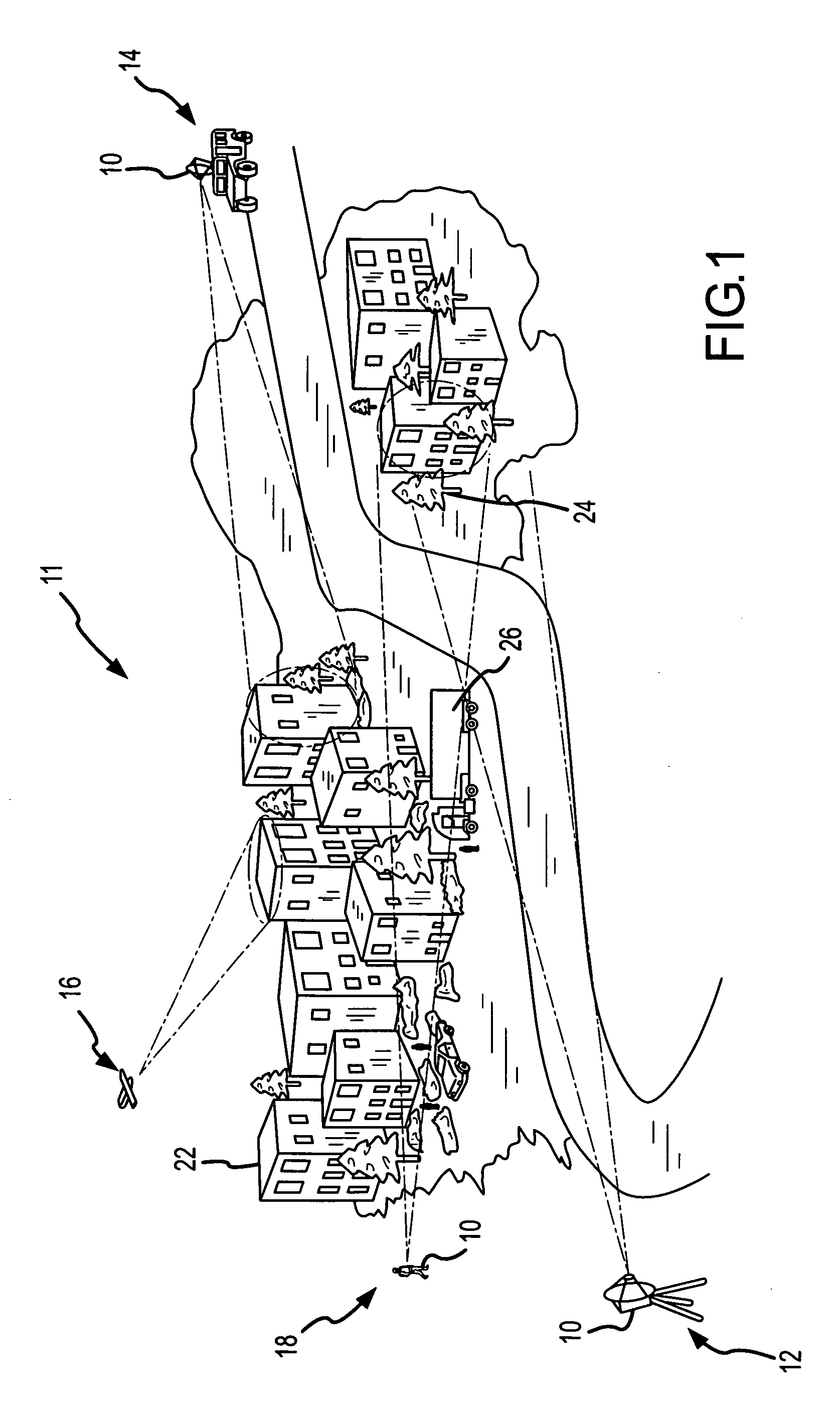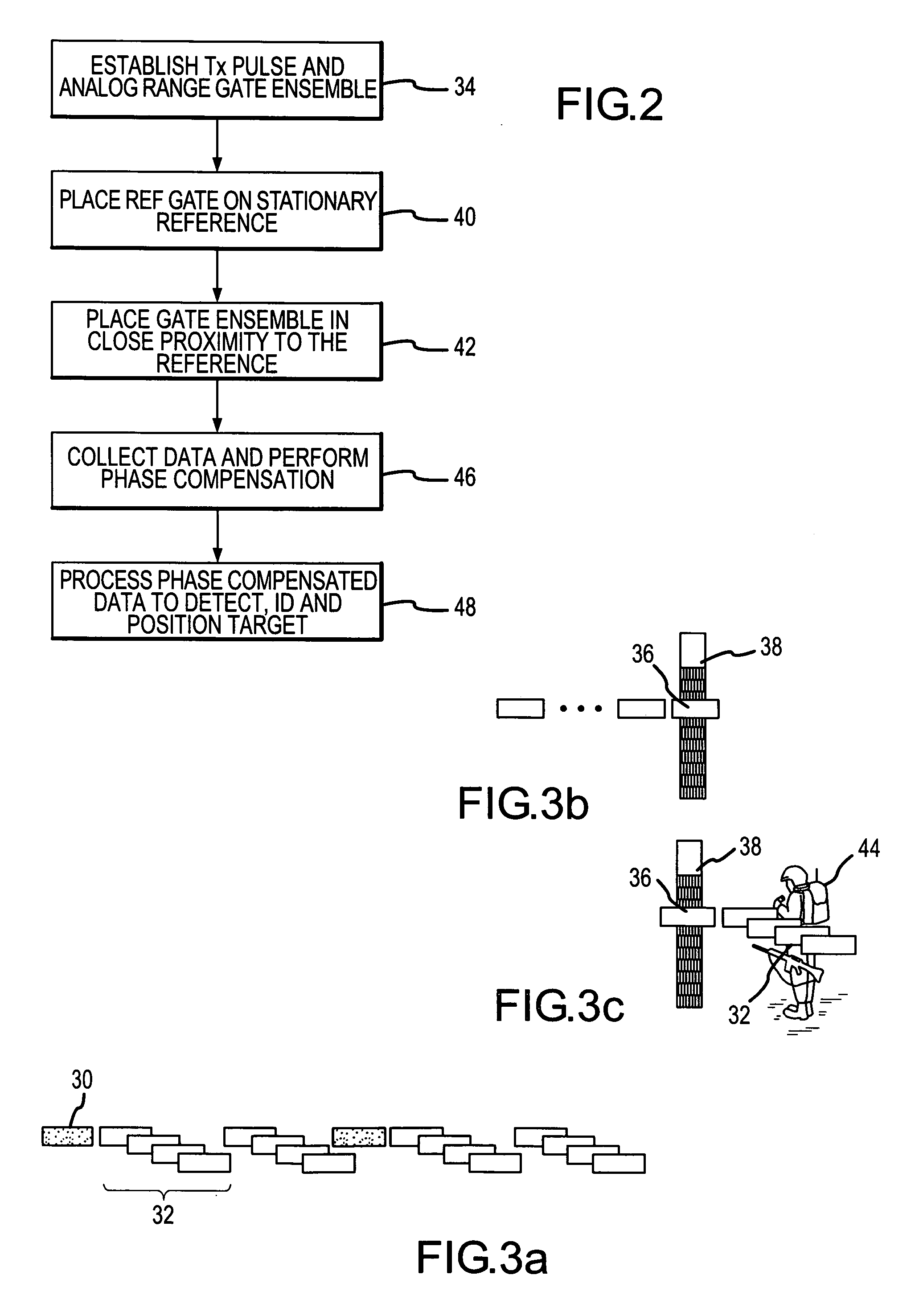Micro movement pulsed radar system and method of phase noise compensation
a pulsed radar and micro movement technology, applied in the field of pulsed radar systems, can solve the problems of not having a known technique for effectively compensating for phase noise, the frequency of pulsed radars is not accurate, and the noise floor is reduced, so as to reduce the noise floor, reduce the bandwidth, and reduce the noise
- Summary
- Abstract
- Description
- Claims
- Application Information
AI Technical Summary
Benefits of technology
Problems solved by technology
Method used
Image
Examples
Embodiment Construction
[0026] The present invention describes a pulsed radar system and method of detecting micro movements and particularly human motion such as walking, breathing or heartbeat. This is accomplished by using phase noise compensation to reduce noise due to drift of the reference oscillator. The noise level due to A / D sampling must be sufficiently low for the phase noise compensation to be effective. As this is currently beyond state-of-the-art for high bandwidth A / D converters used in traditional receiver design, the receiver is suitably reconfigured to use analog range gates and narrowband A / D sampling having sufficiently low noise level as described in FIGS. 2-9. As technology continues to improve A / D and receiver components, the phase compensation techniques may be directly applicable to the high bandwidth A / D samples in traditional receiver designs as described in FIGS. 10-11. Whether phase compensation is applied to traditional receiver designs or a receiver configured with analog ran...
PUM
 Login to View More
Login to View More Abstract
Description
Claims
Application Information
 Login to View More
Login to View More - R&D
- Intellectual Property
- Life Sciences
- Materials
- Tech Scout
- Unparalleled Data Quality
- Higher Quality Content
- 60% Fewer Hallucinations
Browse by: Latest US Patents, China's latest patents, Technical Efficacy Thesaurus, Application Domain, Technology Topic, Popular Technical Reports.
© 2025 PatSnap. All rights reserved.Legal|Privacy policy|Modern Slavery Act Transparency Statement|Sitemap|About US| Contact US: help@patsnap.com



